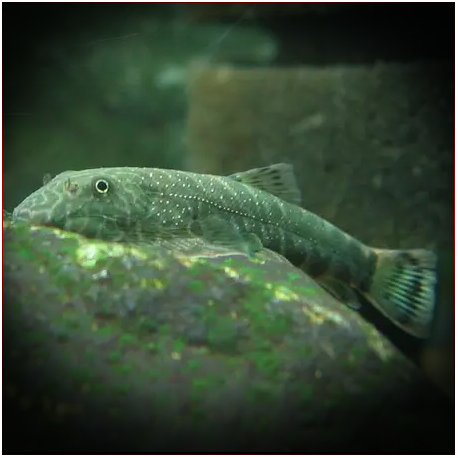More info
Datasheet
| Minimum Tank Size | 60 litres / 15.85 US gallons |
| Maximum Size | 5.0cm / 1.97inches |
| Temperature | 20°C / 68.00°F - 24°C / 75.20°F |
| Hardness | 2.02dgH / 36ppm - 12.05dgH / 215ppm |
| pH | 6.5-8.0 |
Behaviour
This species is known to be very peaceful, but its environmental requirements limit the selection of suitable tankmates somewhat. It should not be housed with much larger, more aggressive, territorial, or otherwise competitive fishes. Suitable tankmates may include small pelagic cyprinids like Tanichthys, Danio, and Rasbora, stream-dwelling gobies from genera Rhinogobius, Sicyopterus, and Stiphodon, as well as rheophilic catfishes like Glyptothorax, Akysis, and Hara spp. Some loaches from specific families are suitable, while others are not. They can be territorial to an extent, with some individuals being more protective of their space, often a prime feeding spot.
Feeding and Diet
Their natural diet likely consists of benthic algae and associated micro-organisms rasped from solid surfaces. In captivity, they accept good-quality dried foods, meatier items like live or frozen bloodworms, and home-made foods with a mixture of natural ingredients bound with gelatin. Providing a mature aquarium with a plentiful supply of algae-covered rocks is crucial for their long-term success. Maintaining a separate tank to grow algae on rocks may be necessary if the main tank lacks sufficient algae.
Reproduction & Dimorphism
Reproduction has not been observed in aquaria for this species. However, observations on other members of the genus revealed breeding attempts with specific conditions such as temperature adjustments and feeding enhancements. Adult females are typically heavier-bodied and slightly larger than males, with differences more noticeable when viewed from above or below.
Habitat and Distribution
Gastromyzon spp. are obligate dwellers of swift, shallow streams with clear, oxygen-saturated water. They are typically found in riffles and runs above or below cascades and waterfalls. These loaches inhabit substrates composed of gravel, rocks, boulders, or bedrock covered with a biofilm of algae and other micro-organisms. The species is endemic to Borneo, with specific populations restricted to single river basins or sub-basins.
Aquarium Setup
For setting up the aquarium, clean and well-oxygenated water is essential, recommending the use of an oversized filter with a turnover rate of 10-15 times per hour. Base substrate can include gravel, sand, water-worn rocks, and pebbles. Aged driftwood and aquatic plants like Microsorum, Crinum, and Anubias spp. can be added for cover and additional grazing areas. Maintaining stable water conditions and a tightly-fitting cover is crucial, as this species can climb glass and feeds on biofilm.
See the table for specific water conditions, tank size, and temperature requirements.

